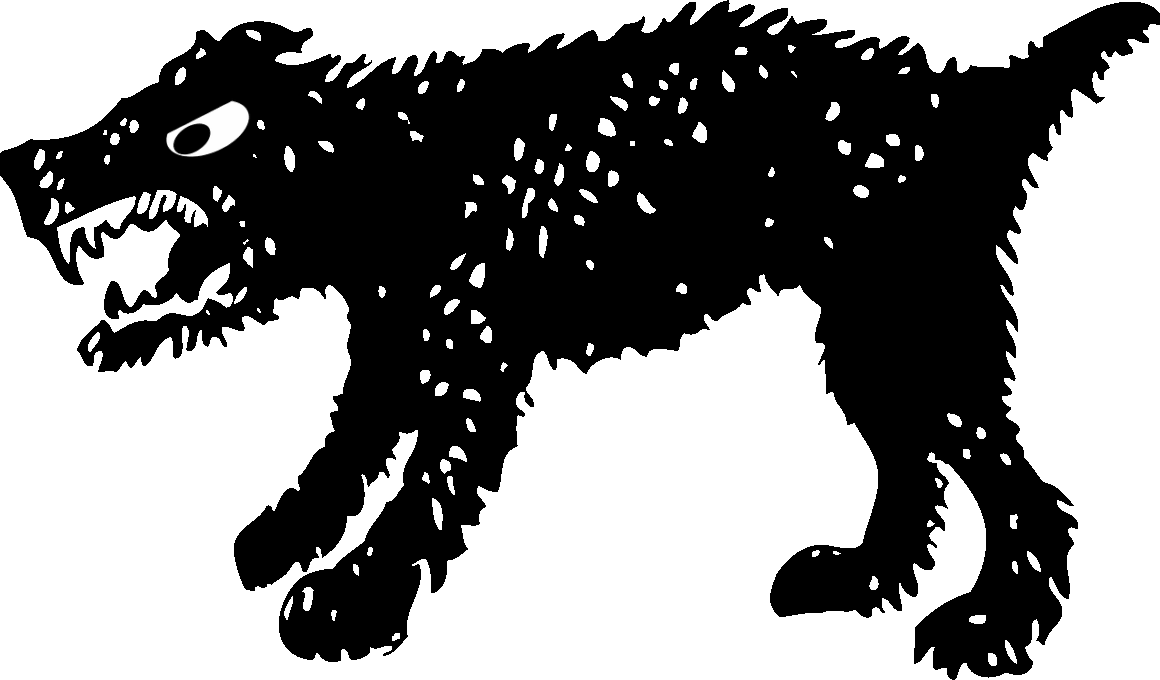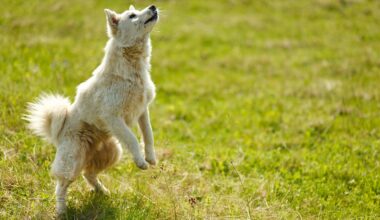How to Manage Aggression Between Littermates in Dogs
Managing aggression between littermates can be a challenging task. Understanding why aggression occurs is crucial for pet owners. Factors contributing to aggression may include competition for resources like food, toys, and attention. Additionally, playtime can escalate into aggression, where one pup may push boundaries. Recognizing early signs, such as growling or snapping, is essential for preventing escalation. Supervision during playtime is necessary to identify potential conflicts before they become serious. Owners should closely monitor their dogs to ensure a harmonious environment. Providing separate spaces for each dog can help limit competition. Feeding dogs separately and allowing them personal downtime assists in reducing rivalry. Furthermore, adequate training is essential for fostering good behavior among littermates. Encouraging positive interactions through supervised play is highly beneficial. Using commands, such as ‘sit’ or ‘leave it,’ teaches dogs to respond to their owners rather than to their instinctual behaviors. All family members should be consistent in their training approach to avoid confusion. Motivating dogs with praise and rewards reinforces positive behavior. These steps can aid in managing aggression effectively, ensuring a peaceful cohabitation among your pets.
Engaging each dog individually can significantly reduce aggression over time. Dog owners should set aside dedicated one-on-one time with each pup. This allows dogs to develop their unique temperament without constant comparisons to their siblings. Activities such as training, walks, and play sessions can reinforce bonding with each individual dog. Additionally, redirecting focus during aggressive situations can help decrease tension. For instance, providing different toys for each dog during playtime may divert attention away from conflict. Introducing frequent breaks into play sessions allows dogs to regroup. This helps prevent overstimulation, which often leads to fights among littermates. Owners should also be aware of their environment. Ensuring a spacious area for play reduces stress and competition. If aggression persists, consulting a professional dog trainer or behaviorist is highly advised. These experts can provide personalized strategies catered to your specific situation. It’s essential to remain patient through this process; behavioral changes take time and require consistent effort. Tracking progress and celebrating small victories reinforces learning for both dogs and their owners. Ultimately, fostering a tranquil environment is key to managing aggression successfully and ensuring lasting companionship.
Recognizing Signs of Aggression
Recognizing signs of aggression in littermates is crucial for prevention. Common behaviors indicative of aggression include growling, baring teeth, or snapping. Additionally, overly excited play that includes biting or chasing should be monitored. Understanding the context of these actions helps in discerning playful behavior from actual aggression. For instance, if the growling accompanies a stiff posture, this may be a warning signal rather than playful banter. Dogs communicate through body language; subtle cues can indicate budding aggression. Pet owners should familiarize themselves with their dog’s signals. Keeping a close eye on interactions during playtime allows for timely interventions. If aggressive behavior surfaces, immediate corrective action is necessary. Firm but calm corrections can show dogs that their behavior is unacceptable. Encouraging breaks when aggression appears can help de-escalate tension and return to a calmer state. Identifying triggers for aggression, such as certain toys or other dogs, also aids in developing effective solutions. By knowing what to look for, owners will be better equipped to manage and mitigate aggression effectively, promoting a safer atmosphere for both dogs.
Another effective method for mitigating aggression between littermates is socialization. Properly socializing dogs can reduce fear and anxiety, which often leads to aggressive displays. By exposing them to various environments, people, and other animals, dogs learn how to interact positively. Early exposure during a critical developmental period between three to twelve weeks is especially beneficial. Even older puppies benefit from gradual and positive interactions. Group training classes can also enhance their social skills while ensuring owners manage aggression appropriately. Teaching dogs to obey commands in a diverse setting allows for learning redirection techniques. Furthermore, owners should use calming techniques to help their dogs remain at ease. Utilizing tools like anxiety wraps, relaxing music, or pheromone diffusers can reduce stress levels. It’s imperative that owners foster a supportive atmosphere, where dogs feel comfortable exploring new stimuli. Incorporating regular, controlled play sessions with other friendly dogs provides additional opportunities for social interaction. Owners are encouraged to monitor body language meticulously during these sessions to ensure positivity prevails. Skillful management of socialization experiences can significantly decrease aggression, offering a balanced and peaceful coexistence for littermates.
Creating a Structured Environment
Creating a structured environment is pivotal for curtailing aggression among littermates. Consistent daily routines provide dogs with a sense of security. Predictability helps reduce anxiety, which can manifest as aggression towards siblings. Owners should implement schedules for feedings, exercise, and playtime. Providing clear boundaries is vital; dogs must comprehend their owner’s expectations. Designating specific areas for each dog can also reduce competition for resources and create a more harmonious living situation. For example, separate feeding stations can alleviate food guarding behavior. Equally important is establishing rules regarding playtime and access to toys. Limiting access to certain toys during heated moments can help prevent aggressive outbreaks. Training sessions should also be consistently integrated into each dog’s daily routine. Goals should focus on both individual and group training strategies. Reinforcement of good behavior is critical, ensuring dogs associate positive outcomes with following rules. Finally, involving all family members in the training process fosters consistency. A unified approach helps dogs understand expectations, avoiding confusion. By creating a structured and well-defined environment, owners can effectively reduce aggression, promoting lasting peace among their pet companions.
Furthermore, positive reinforcement is essential in managing aggression between littermates. Instead of harsh corrections, using rewards encourages dogs to repeat desirable behaviors. Simple techniques like treats, praise, or playtime reinforce positive interactions. During training sessions, rewarding calm behavior helps dogs learn appropriate responses to various stimuli. For example, when two dogs are playing gently, offering treats will reinforce that behavior. In contrast, aggressive behavior should be met with immediate withdrawal of attention. This teaches dogs that aggressive actions lead to negative outcomes. It’s crucial to remain patient and avoid frustration; every dog learns at its pace. Providing an appropriate outlet for energy, such as interactive toys or puzzle feeders, can also limit potential aggression. Engaging dogs in structured activities maintains a calm atmosphere and promotes problem-solving skills. Additionally, teaching basic obedience commands fosters good behavior and encourages communication. A strong bond based on trust and positivity reduces the likelihood of aggression. Regular assessments of each dog’s body language allow owners to adjust their approach to training and interactions as necessary. Through consistent efforts, pet owners can create a thriving environment that diminishes aggression and fosters companionship.
Seeking Professional Help
Lastly, do not hesitate to seek professional help when needed. Consulting a dog trainer or behaviorist may be essential to address persistent aggression issues. These experts provide tailored advice and strategies based on each dog’s specific temperament. They can observe interactions and accurately diagnose underlying problems contributing to aggressive behavior. Additionally, participating in behavior modification programs can help establish more effective training methods. Structured classes also encourage proper socialization with peers. Furthermore, trainers often offer valuable techniques for managing jealousy or resource guarding behavior, crucial for littermates. Engaging professionals provides pet owners with new insights and can lead to quicker progress. It’s important to remember that aggression management may require considerable time and practice. Continuous training reinforces concepts and maintains harmony at home. Moreover, owners should ensure that all family members are involved in the training process for consistency. This unified approach helps dogs internalize expectations, reducing confusion. Seeking help demonstrates a commitment to providing a safe environment, prioritizing the well-being of both the dogs and their owners. By addressing aggression with expert assistance, longer-lasting peace can be achieved in households with multiple dogs.
In conclusion, managing aggression between littermates necessitates a multifaceted approach. Understanding the factors contributing to aggression lays the groundwork for effective interventions. By recognizing early signs of aggression and implementing training, owners can create a more peaceful coexistence among dogs. Establishing clear boundaries and structured environments fosters comfort, reducing competition. Encouraging individual attention enhances bonding while promoting overall mood stability. Positive reinforcement is key, helping dogs associate good behavior with rewards. Moreover, don’t shy away from consulting professionals when necessary, as they offer valuable insights tailored to your dog’s needs. Socialization and structured environments significantly alleviate aggression, fostering overall well-being. Every dog is unique, and adapting strategies to fit individual personalities is crucial. With dedication and patience, pet owners can successfully manage aggressive tendencies, ensuring a happy coexistence. In doing so, they create a fulfilling life for both themselves and their furry companions. Remember that resolving aggression is an ongoing journey that requires commitment. Celebrate small victories during this process and acknowledge improvements over time. With love, training, and understanding, maintaining peace among littermates becomes not just achievable but sustainable.


